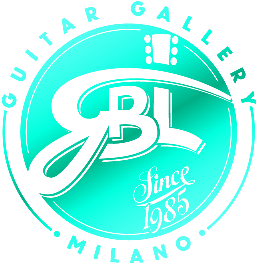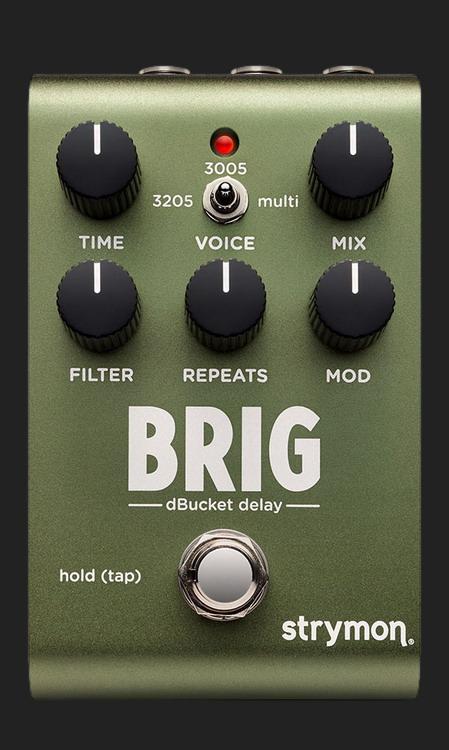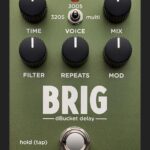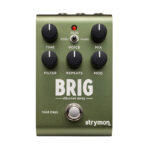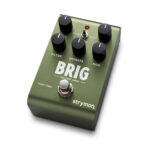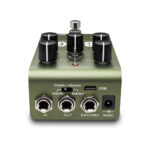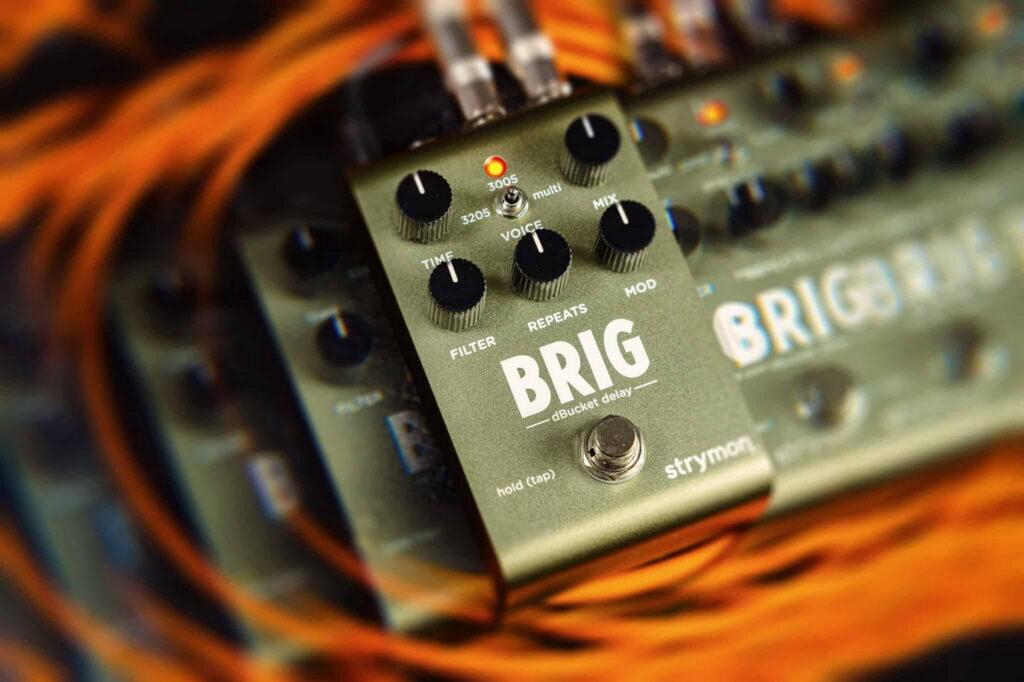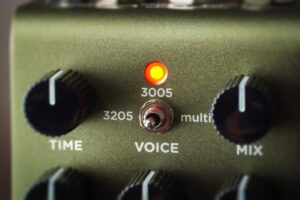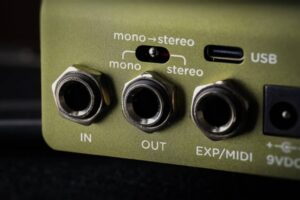SOUND DESIGN
Brig’s voices are crafted with an attention to detail that encompasses not only the characteristics of the BBD chips, but also the surrounding circuitry responsible for turning those early designs into the classics they are considered today.
Brig’s modulation is individually voiced for each of the three delay types, and was carefully tuned to create beautifully lush modulation at any delay time or modulation speed.
And while the Multi delay voice with its dual cross-coupled ping-pong delay lines would seem the obvious go-to for creating a huge stereo field, Brig’s modulation is designed to produce awesome stereo effects with the 3205 and 3005 voices as well.
To reveal a hidden superpower, set the 3205 voice to its minimum 30ms delay time and turn up the modulation for sumptuous bucket brigade chorus effects.
Classic bucket brigade delays created a unique variety of instantly recognizable, sought-after feedback effects, and Brig faithfully and organically reproduces the same sounds and experience.
Brig’s smooth, responsive controls and remarkable dBucket sound engine invite you to crank up the repeats, twist the Time knob, adjust the filter, and get lost in vintage sci-fi psychedelia.
Besides all the fun to be had by pushing Brig into full self-oscillation, just sitting on the edge of runaway feedback can create intriguing sound beds under your lead or rhythm playing.
As an added bonus, each of Brig’s three delay voicings has its own distinct feedback characteristics, so you can tailor the feedback response to fit the sound you’re going for.
A whisper of gentle noise is part of the sound of bucket brigade analog delay repeats (which is traditionally shaped and controlled by companding and filtering processes in the analog domain), and all of that sonic detail and organic behavior is part of the sound of Brig.
Especially with the 3005 voice, the subtle noise adds a dreamlike quality to the repeats. Lovely as it is, the noise is also optional, and is easily dialed out by turning the filter knob clockwise past 2 o’clock.
Brig’s filter is customized for each voice, controlling not only noise level and EQ for repeats but bucket loss as well.
Modern technology FTW: Tapping in tempos with Brig works in a seamless way that would be impossible with a real analog delay.
Confidently tap your tempos with no pitch shifting, no clicks, ramps or mutes. All those glorious and unique bucket brigade pitch-shifting, spaceship-launching and delay character-modifying effects are always available when setting tempo with the Time knob, but when tapping tempo Brig changes to new values smoothly and keeps you in the groove. And once tempo has been tapped in, you can use the Time knob to set the Tap Division for triplet, eighth, dotted eighth, or quarter note.
FEATURES
Brig features full MIDI implementation and 300 presets, allowing you to control it remotely by sending MIDI commands from your controller or DAW via the EXP/MIDI jack or USB-C connection.
Remotely bypass or engage the pedal, automate decay time or other knob adjustments in your DAW or recall unique presets for each song on your setlist — the possibilities with MIDI are limitless.
Brig lets you choose between electromechanical relay-switched true bypass for a 100% untouched and unprocessed signal when the pedal is not engaged (which is the default), or our premium buffered bypass, which preserves your signal’s integrity by preventing the high frequency roll-off that can happen due to longer cable runs.
Uncompromised dynamics and feel. Exceptional touch sensitivity and responsiveness. Brig feels just as good as it sounds, thanks to a high-impedance, ultra-low noise and discrete Class A JFET preamp input.
Even though it might look like it’s a standard mono effect, there’s no need to make compromises when it comes to signal routing or pedal placement with Brig — it’s a stereo delay pedal with full stereo in/out capabilities.
Equipped with a single TRS input and TRS output jack, the pedal keeps to a compact form factor while still giving you the option to use it in stereo.
A dedicated rear panel Input switch allows you to determine the audio routing, selecting between Mono In → Mono Out, Mono In → Stereo Out, or Stereo In → Stereo Out (stereo in and out requires a TRS cable for each jack).
An evolution in technology led by mobile phones and laptop computers now allows our pedals to perform more simultaneous processes than ever before, and with significantly less power draw.
That means more processing power for every sonic nuance, and less power consumption on your pedal board.
SPECS
- High impedance ultra low-noise discrete Class A JFET TRS stereo input
- Low impedance TRS stereo output
- Expression pedal input allows the connection of a TRS expression pedal, MiniSwitch, MultiSwitch Plus, or TRS MIDI connection
- USB jack for controlling via MIDI from a computer or for performing firmware updates
- Premium JFET analog front end
- Ultra low noise, high performance 24-bit 96kHz A/D and D/A converters provide uncompromising audio quality
- 520MHz ARM Superscalar processor
- 32-bit floating point processing
- 20Hz to 20kHz frequency response
- Audio Input Impedance: 1M Ohm
- Audio Output Impedance: 100 Ohm
- Typical signal to noise ratio: 116dB
- Strong and lightweight anodized aluminum chassis
- Power requirements: maximum 9 volts DC center-negative, with a minimum of 250mA (power supply NOT included)
- Dimensions:
- 4.6” deep x 2.7” wide x 2.5” tall
- 11.7 cm deep x 6.9 cm wide x 6.4 cm tall
- Designed and built in the USA
